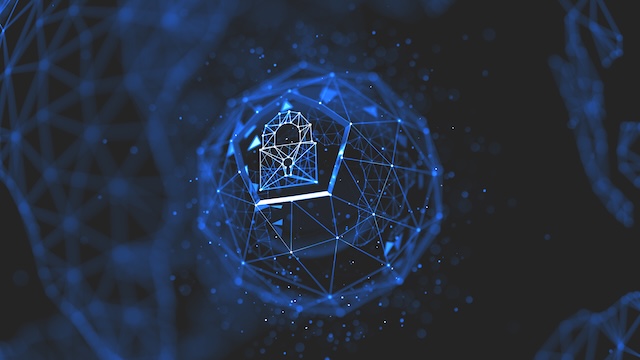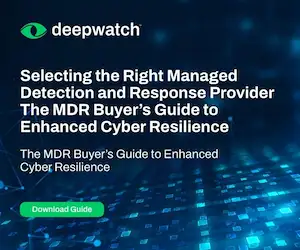
RMM Security (remote monitoring and management security) refers to the strategies, technologies, and best practices designed to secure RMM tools and their environments. RMM software allows IT and managed service providers (MSPs) to remotely monitor endpoints, deploy updates, execute scripts, and manage systems across distributed infrastructures. Given these tools’ privileged access, RMM security ensures these capabilities are protected against unauthorized access, misuse, and exploitation by threat actors. As RMM platforms bridge the operational control center and the enterprise endpoints, any compromise can lead to lateral movement, privilege escalation, and full-blown breaches.
The Importance of RMM Security in Enterprise Cybersecurity Operations
Enterprise cybersecurity operations hinge on visibility, control, and rapid response. This section introduces why RMM security is now a priority in enterprise threat defense strategies.
- RMM Tools as High-Value Targets: RMM tools such as ConnectWise Automate, Kaseya VSA, NinjaOne, and SolarWinds N-central offer powerful administrative capabilities that, if compromised, provide attackers with systemic access to enterprise networks. Their ability to push software, change configurations, and access data across hundreds or thousands of machines makes them an ideal beachhead for attackers seeking widespread compromise or persistence.
- RMM in the Attack Lifecycle: Threat actors—including nation-state groups and ransomware cartels—leverage RMM software in post-compromise stages to maintain persistence, pivot to other systems, and evade detection. Compromised RMM agents or stolen administrator credentials can enable silent, stealthy control over critical infrastructure. This was evident in the 2021 Kaseya VSA ransomware attack, where a single vulnerability enabled REvil to deploy ransomware across hundreds of managed customers.
- Misuse by Insider Threats: Even legitimate users—internal administrators, contractors, or third-party vendors—can misuse RMM tools for unauthorized surveillance, exfiltration of sensitive data, or sabotage. Without proper segmentation, logging, and least-privilege enforcement, these tools become vectors for insider risk.
Key Components of RMM Security
To protect RMM environments effectively, cybersecurity leaders must implement a multi-faceted RMM security strategy that addresses identity, access, visibility, and resilience.
- Authentication and Identity Assurance: Strong RMM security begins with securing access. Multi-factor authentication (MFA) is essential, preferably phishing-resistant methods like hardware tokens or FIDO2-compliant authenticators. Integrating RMM platforms with enterprise identity providers (e.g., Azure AD, Okta) allows centralized access policies, session monitoring, and automatic revocation when personnel change roles.
- Least Privilege and Role-Based Access Control (RBAC): Not all technicians need domain-wide privileges. RBAC ensures users only access systems and perform actions relevant to their role. This principle of least privilege should extend to granular controls over scripts, remote shell access, and file transfer capabilities within the RMM platform.
- Endpoint and Network Segmentation: RMM agents should operate within tightly scoped network segments with restricted access to critical infrastructure. Firewall rules, VLAN separation, and endpoint policies can help isolate management planes from production workloads, minimizing the blast radius of a breach.
- Continuous Monitoring and Logging: Logging every interaction with the RMM platform—from login events to script execution and file transfers—is critical. Integrating RMM logs into SIEM systems enables SOC teams to monitor anomalous activities such as off-hours access, unauthorized asset enrollment, or lateral movement attempts.
- Secure Software Supply Chain: RMM platforms must be continuously monitored for vulnerabilities. Enterprises should vet vendor patching cadences, scrutinize code signing practices, and isolate RMM update servers. Regular vulnerability scanning and dependency analysis are critical to identifying backdoors or tampered updates, as seen in the SolarWinds Orion incident.
- Threat Detection and Response Integration: RMM security isn’t complete without integration into EDR, XDR, and SOAR ecosystems. Behavioral analytics and threat intelligence feeds can identify command-and-control activity masked as legitimate RMM operations. Automated playbooks can isolate compromised endpoints, revoke RMM credentials, and trigger containment workflows.
RMM Security’s Practical Applications and Operational Best Practices
To effectively secure remote monitoring and management platforms within enterprise environments, organizations must implement practical, operational best practices that address deployment hardening, threat monitoring, credential management, and incident response preparedness. The following strategies outline how to operationalize RMM security to mitigate risk and ensure resilient, secure remote administration.
- Hardening RMM Deployments: Enterprises should deploy RMM tools within dedicated management enclaves protected by strict firewall and IAM policies. RMM web interfaces should be restricted to internal IPs or accessible only via VPN or Zero Trust Access solutions. Secure configuration baselines—including disabling unnecessary services, removing default credentials, and implementing TLS 1.2/1.3—are foundational.
- Monitoring for Abuse and Shadow RMM: SOC teams must watch for unauthorized or “shadow” RMM tools installed by rogue users or attackers. Threat actors may install legitimate software like AnyDesk or TeamViewer to bypass security controls. Asset discovery tools and EDR telemetry can help uncover unauthorized RMM instances.
- Credential Hygiene and Vaulting: Administrator credentials used with RMM tools should be vaulted using privileged access management (PAM) systems. Time-based access, session recording, and just-in-time provisioning reduce exposure and increase accountability. API keys and service accounts must be rotated frequently and restricted in scope.
- Incident Response Readiness: Incident response teams should have predefined runbooks for RMM compromise scenarios. This includes revoking RMM access, validating agent integrity, conducting forensic analysis of logged activities, and restoring systems from clean images if tampering is detected.
Emerging Trends in RMM Security
Looking ahead, several trends are reshaping the RMM security landscape.
- AI-Driven Behavioral Analytics: Next-generation RMM platforms incorporate machine learning models to detect anomalous technician behavior, such as rapid scripting activity, mass configuration changes, or access to non-assigned endpoints. These real-time detections will be key in mitigating insider and external abuse.
- Integration with Zero Trust Architecture: RMM tools are increasingly embedded within Zero-Trust models, where no user or device is inherently trusted. To limit RMM overreach, security-conscious enterprises are adopting conditional access, device posture checks, and continuous verification models.
- Decentralized and Federated Management Models: Large enterprises are moving toward decentralized RMM architectures, where regional SOCs or business units manage their own RMM instances under a unified policy umbrella. This limits single points of failure and distributes risk, especially in highly regulated environments.
- Regulatory and Compliance Drivers: RMM security is becoming a compliance requirement in frameworks like NIST 800-171, ISO 27001, and CMMC. Financial, healthcare, and critical infrastructure sectors are under increasing pressure to demonstrate secure remote access and privileged management practices.
Role of Managed Security Services in RMM Security
Managed security services (MSS) are pivotal in fortifying RMM security by delivering continuous oversight, expert threat analysis, and rapid incident response capabilities. For organizations leveraging RMM platforms at scale, MSS providers act as an extension of internal cybersecurity teams, enhancing visibility and enforcing secure operational practices.
- Centralized Monitoring and Threat Detection: MSS providers offer 24/7 monitoring of RMM environments, ingesting logs from remote agents, admin consoles, and supporting infrastructure into centralized SIEM platforms. By correlating these data streams with threat intelligence feeds and known TTPs, MSS analysts can detect suspicious activities such as unauthorized remote sessions, anomalous script executions, and lateral movement attempts. These detections are enhanced through behavioral baselining of RMM operations across the enterprise.
- Policy Enforcement and Configuration Hardening: MSS teams help organizations enforce strict security policies across RMM tools, ensuring that configurations align with best practices. This includes auditing role-based access controls, disabling unused remote features, enforcing multi-factor authentication, and applying patch management on RMM servers and agents. MSS also supports secure deployment processes, often reviewing configurations before changes are pushed enterprise-wide.
- Incident Response and Threat Containment: When indicators of compromise emerge in an RMM environment, MSS providers act quickly to contain threats. They can isolate affected endpoints, revoke compromised credentials, and trigger automated playbooks integrated with SOAR platforms. Their ability to coordinate across hybrid and multi-tenant environments allows for fast containment and remediation—often before an attacker can achieve lateral escalation.
- Compliance and Reporting Support: MSS partners assist in aligning RMM operations with regulatory frameworks such as HIPAA, PCI DSS, and NIST. They generate audit-ready reports detailing access logs, policy compliance, and incident summaries. This reporting aids in meeting internal governance standards and passing external audits with minimal friction.
Managed security services add depth and breadth to RMM’s security strategy, providing real-time vigilance, technical expertise, and operational resilience to protect privileged remote access in modern enterprises.
Conclusion
RMM tools, while indispensable for operational efficiency, have become potent double-edged swords in the cybersecurity landscape. Securing RMM environments is not optional but a strategic imperative for cybersecurity operations professionals. As attackers evolve their techniques and automation deepens in IT operations, RMM platforms will remain critical focal points for defenders and adversaries.
Ensuring RMM security requires a comprehensive defense-in-depth strategy that integrates identity controls, least privilege, continuous monitoring, and proactive threat detection. For Fortune 1000 organizations, securing this operational backbone is essential to safeguarding intellectual property, ensuring business continuity, and maintaining trust in the digital enterprise.
Deepwatch® is the pioneer of AI- and human-driven cyber resilience. By combining AI, security data, intelligence, and human expertise, the Deepwatch Platform helps organizations reduce risk through early and precise threat detection and remediation. Ready to Become Cyber Resilient? Meet with our managed security experts to discuss your use cases, technology, and pain points and learn how Deepwatch can help.
Learn More About RMM Security
For cybersecurity operations professionals seeking to deepen their understanding of Remote Monitoring and Management (RMM) security, Deepwatch offers several valuable resources:
- Cyber Intel Brief: March 6–12, 2025: This briefing discusses cybercriminals’ increasing exploitation of RMM tools as initial access vectors. It highlights the shift from traditional malware to RMM tools like AnyDesk and ScreenConnect in phishing campaigns, emphasizing the need for robust monitoring and endpoint protections.
- Cyber Intel Brief: December 19–25, 2024: This report details an incident where attackers exploited a Fortinet Endpoint Manager Server vulnerability to gain unauthorized access and deploy RMM tools. It underscores the importance of timely patching and monitoring RMM deployments to prevent similar exploits.
- Cyber Intel Brief: October 25–November 1, 2023: This analysis covers how threat actors employed NetSupport Manager, an RMM tool, to compromise entire domains, likely leading to data exfiltration. It provides insights into the tactics used and offers recommendations for mitigating such threats.
